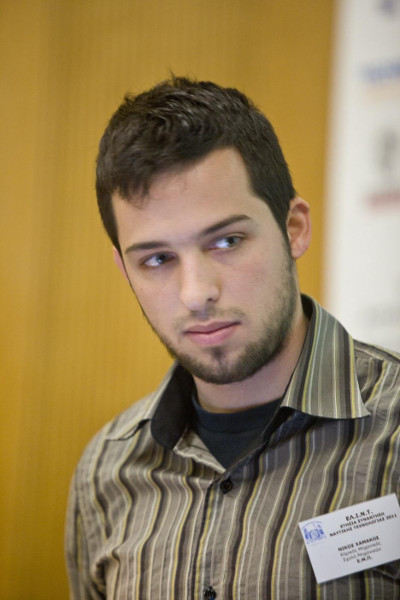So, you’ve found your way here! 👋
I am currently a Research and Development Engineer at the Hellenic Research Centre for Metals S.A. (ELKEME), where my work focuses on modeling industrial processes and applying computational methods to solve complex engineering challenges.
I earned my PhD from the School of Chemical Engineering at NTUA under the supervision of Prof. Thanasis Papathanasiou. My research is focused on the computational modeling of wetting phenomena on micro-structured solid surfaces inspired by nature, such as butterfly wings and lotus leaves, which exhibit remarkable properties like directional wetting and self-cleaning.
My PhD research introduced a continuum sharp‐interface model for wetting on textured surfaces. In this approach, we augmented the Young–Laplace equation with a disjoining pressure term to capture microscale liquid–solid forces. The disjoining pressure is often taken from a Lennard-Jones–type potential, representing the attraction/repulsion between the liquid and solid. Crucially, we treated the entire droplet interface in one framework, so that the contact angle and line friction emerge naturally from the force balance rather than being imposed. In other words, the model computes the full droplet shape on a patterned substrate and the apparent contact angle comes out of the simulation, bypassing explicit contact‐angle boundary conditions. This allows efficient computation of equilibrium wetting states (e.g. Cassie–Baxter, Wenzel) and transitions, based on the interplay of surface tension, viscous stress, and the disjoining pressure.
Some key milestones in the evolution of my research work include:
- 2013: My colleagues and I first applied the augmented Young–Laplace model to static wetting on micro-structured surfaces. In Soft Matter (2013) we showed how solving the augmented Y–L equation yields equilibrium droplet shapes and energy barriers between Cassie–Baxter and Wenzel states, without having to prescribe Young's contact angle at each contact line. (Soft Matter 9, 9624, 2013)
- 2016: We extended the model to dynamic wetting. In a Physics of Fluids article, we simulated droplets spreading on rough substrates. Using the same sharp-interface formulation, we recovered known spreading laws and showed that the contact-line motion and dynamic contact angle result implicitly from the disjoining pressure and viscous forces – again without any ad-hoc contact-line condition. (Phys. Fluids 28, 022105, 2016)
- 2021: Further developments with international collaborators (notably Jiayu Du and Qi Min from Tsinghua University, China) modeled initial spreading and retraction dynamics of impacting droplets. For example, Du et al. applied the method to quantify how wettability, liquid properties, and surface topography affect early-stage spreading. This work expanded our continuum simulations to viscous retraction and validated the results against direct numerical methods (e.g. lattice Boltzmann), continuing to avoid explicit contact-angle input. (Phys. Fluids 33(4), 042118, 2021)
- 2025: Over a decade after the initial model development, the continuum approach has now been independently validated. Bellantoni et al. (2025) developed a hybrid immersed-boundary / lattice-Boltzmann (IB–LB) scheme for wetting. Their simulations use our disjoining pressure interaction at the wall to enforce wetting, regularizing the interface near the contact line so that the equilibrium contact angle is obtained without any imposed boundary condition. This IB–LB study confirmed that our sharp-interface continuum approach accurately captures both droplet statics and dynamics, reinforcing the validity of our model. (Phys. Rev. E 112, 025305, 2025)
On this site, you can explore my publications in academic journals and conference proceedings.
Contact me
✉ nhamakos at mail dot ntua dot gr
✉
nikoscham at gmail dot com
